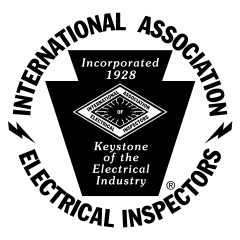Question: I have run into two similar situations: 1) A panel containing only the master shut-off is located on a pole with the meter about 50 feet from the house. A panel with the circuit breakers for the home is located in the garage. 2) Similar, except this time it was a condo—two connected homes. The panel with the master shut-off was on the exterior wall of one of the other condos and the panel with the breakers was in the garage. My question: Is the panel with the master shut-off the main panel and the other a sub-panel, or is the 2nd panel the main panel? I’ve asked two electricians; one said it was a panel and sub–panel and the other said the first panel was just the shut-off and the second panel was the main panel. —
 Home Inspector Answer: Let’s use the correct terms to end the confusion. Using the terms “main panel” and “sub-panel” is neither correct nor incorrect as neither term is in the code. Besides, what does “main panel” indicate? • Is it indicating the panel where “the mains are,” implying “main disconnect(s)”? • Or is it taken by the client as being the “main panel where all/most of the breakers are,” i.e. where they will go to check a breaker when a circuit goes off? There are two types of electrical panels: • Service equipment panels (has main service disconnect) • Non-service equipment panels (no main service disconnect)
Home Inspector Answer: Let’s use the correct terms to end the confusion. Using the terms “main panel” and “sub-panel” is neither correct nor incorrect as neither term is in the code. Besides, what does “main panel” indicate? • Is it indicating the panel where “the mains are,” implying “main disconnect(s)”? • Or is it taken by the client as being the “main panel where all/most of the breakers are,” i.e. where they will go to check a breaker when a circuit goes off? There are two types of electrical panels: • Service equipment panels (has main service disconnect) • Non-service equipment panels (no main service disconnect)
The first type is easy to name, they are service equipment panels. The second type not as easy as “not service equipment” is awkward to use, however “remote panel” works as the panel is “remote” from the service equipment panel … but … a “remote panel” could be right next to the service equipment panel … and that could be confusing to many. So why not just use “electrical panel” for non-service equipment panels—and give the location of the panels. Based on your descriptions: A) – service equipment panel on pole – electrical panel is in the garage B) – service equipment panel is on the (describe which wall) exterior wall – electrical panel is in the garage Service entrance conductors go from the utility supply (overhead or underground) to the service equipment panel. Service equipment has the main service disconnect in it. Feeder conductors go from the service equipment panel to the electrical panel









